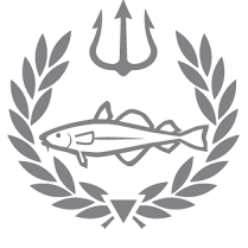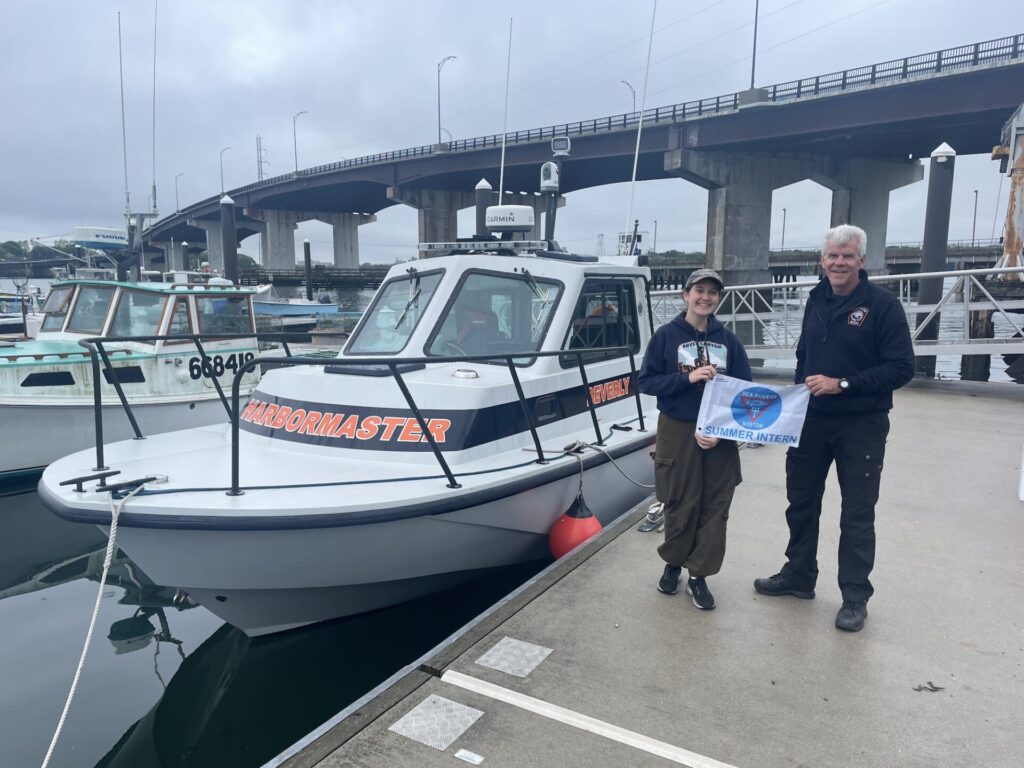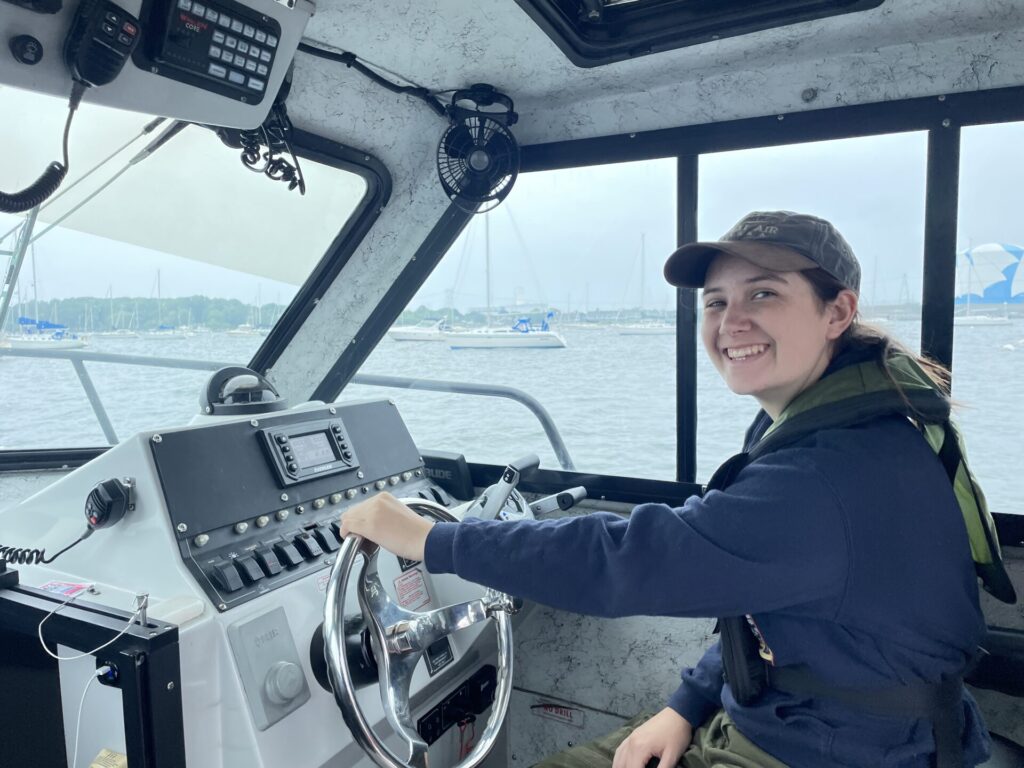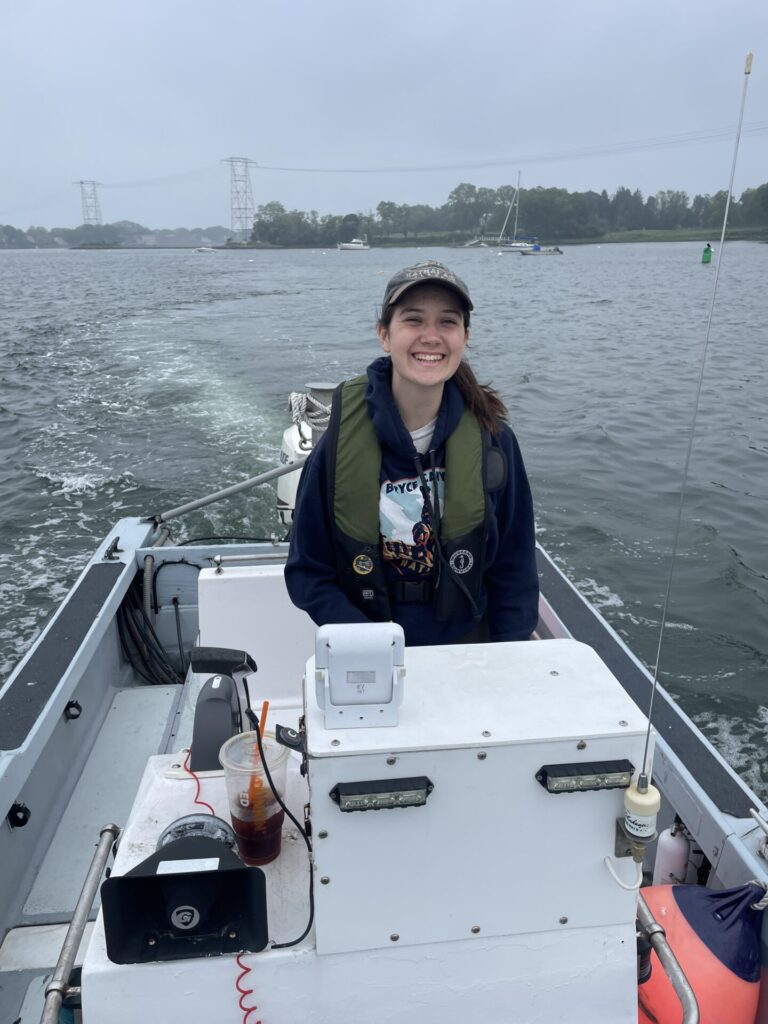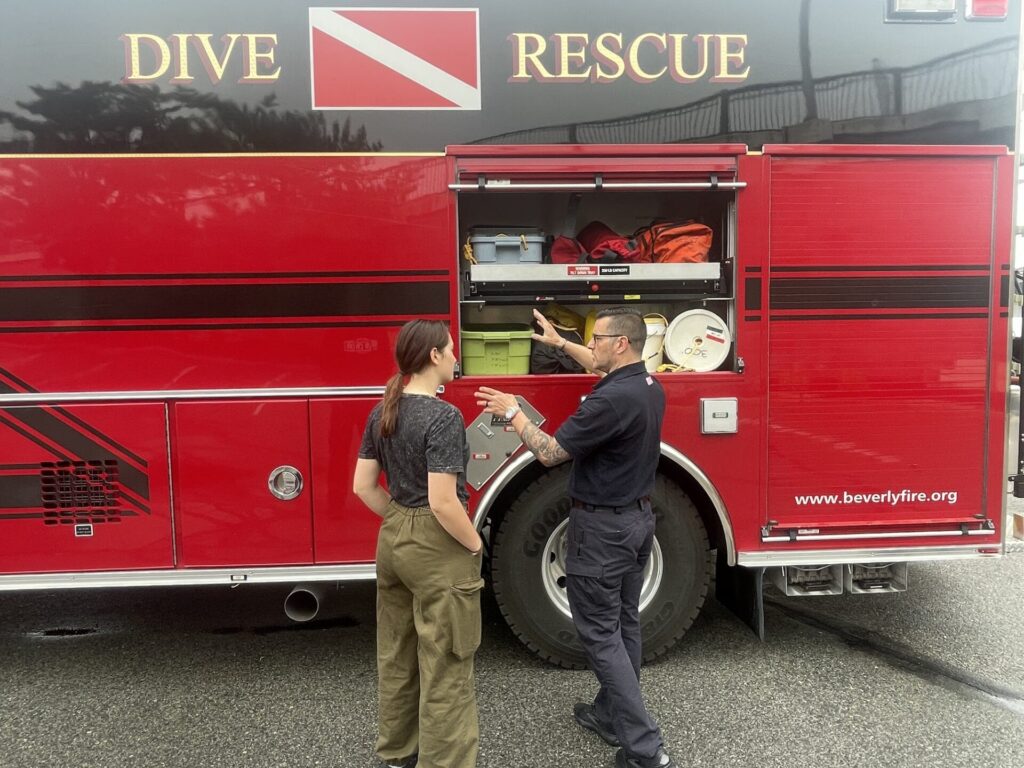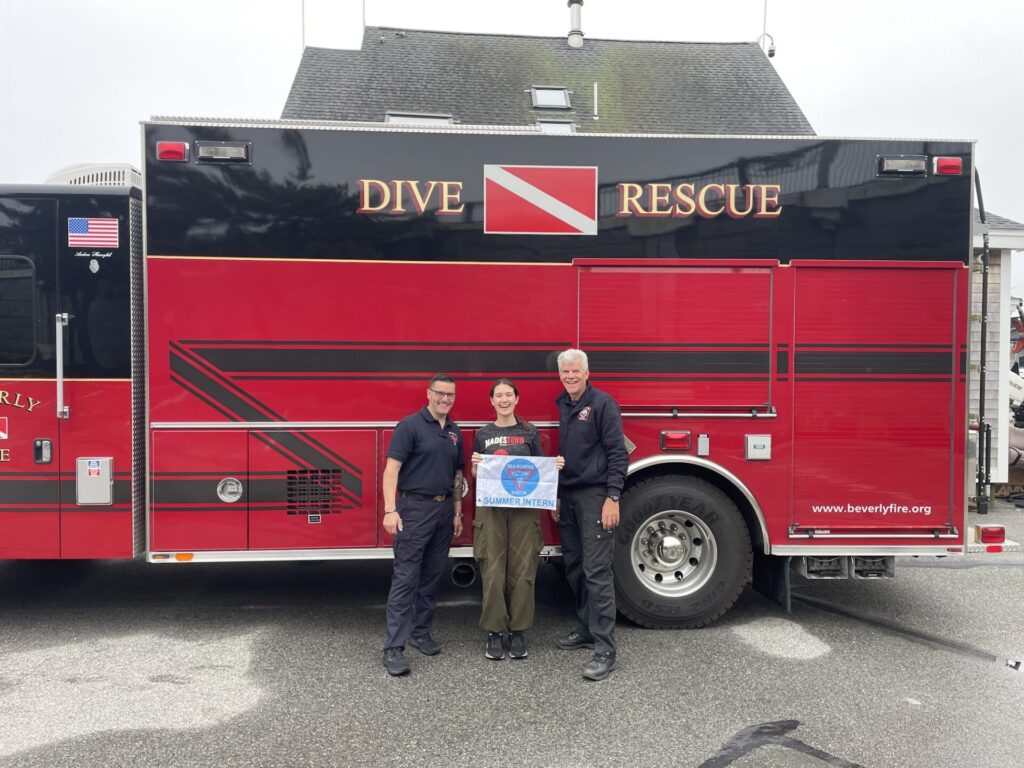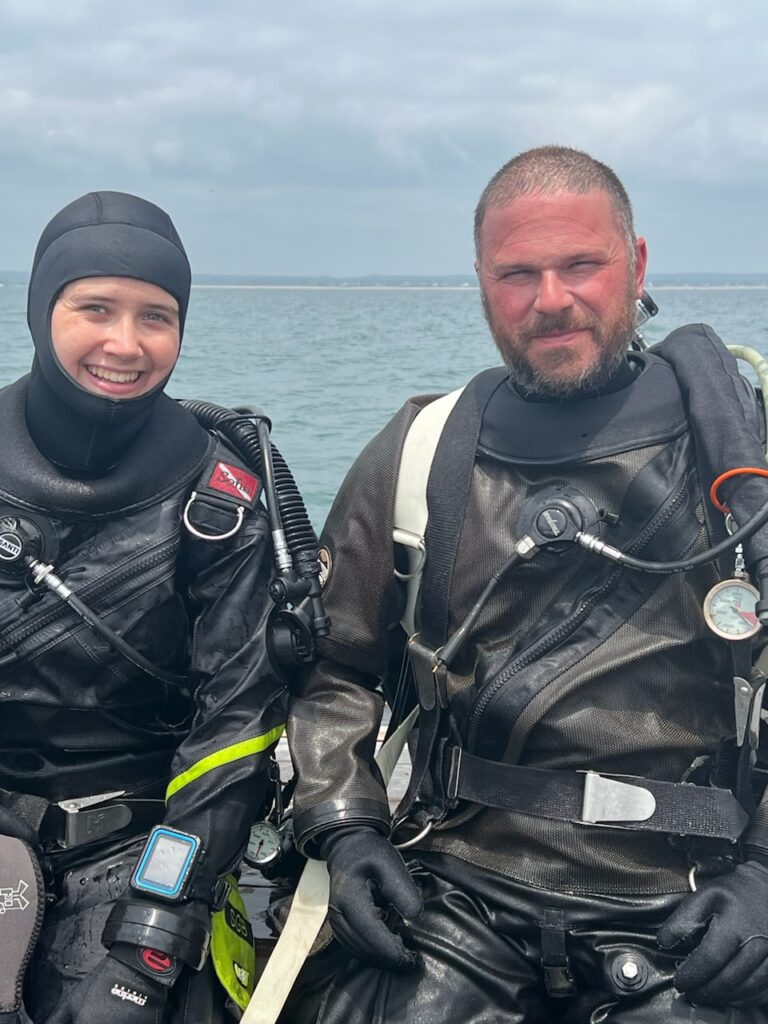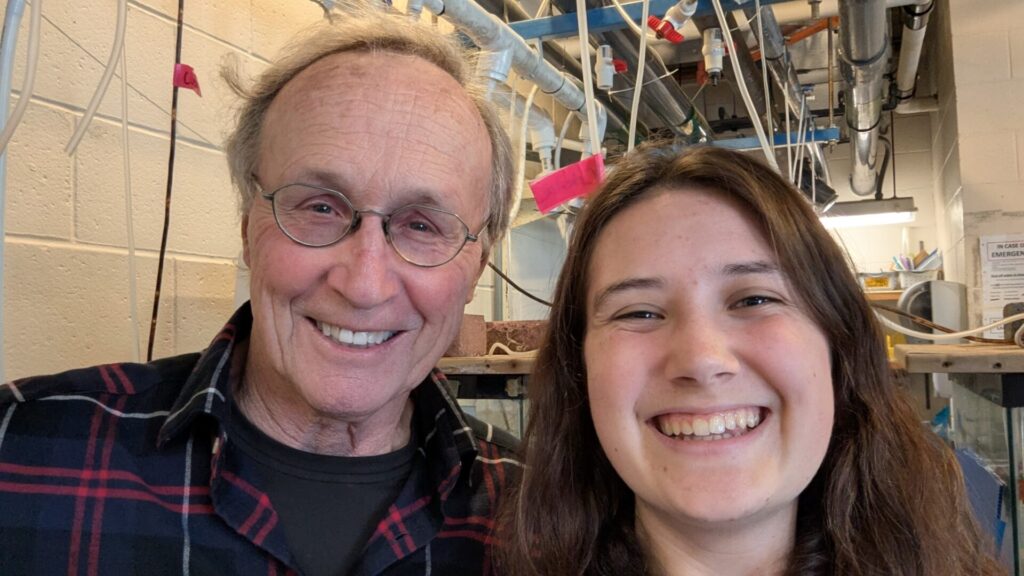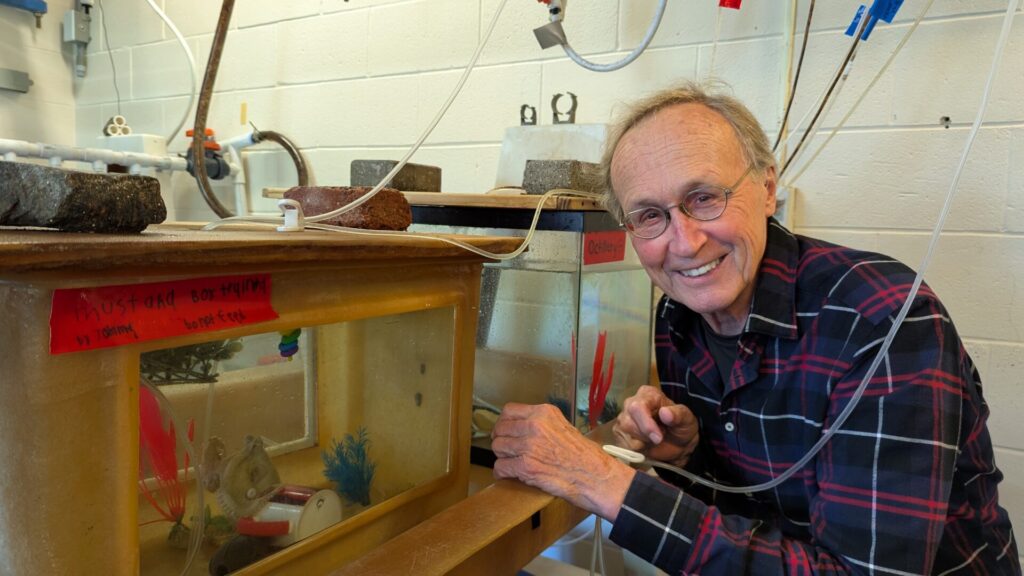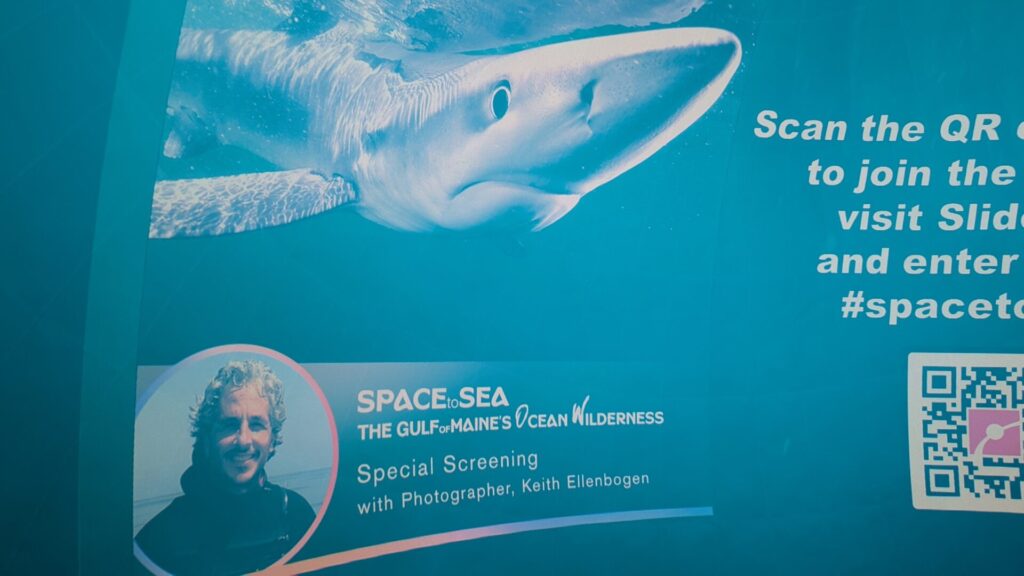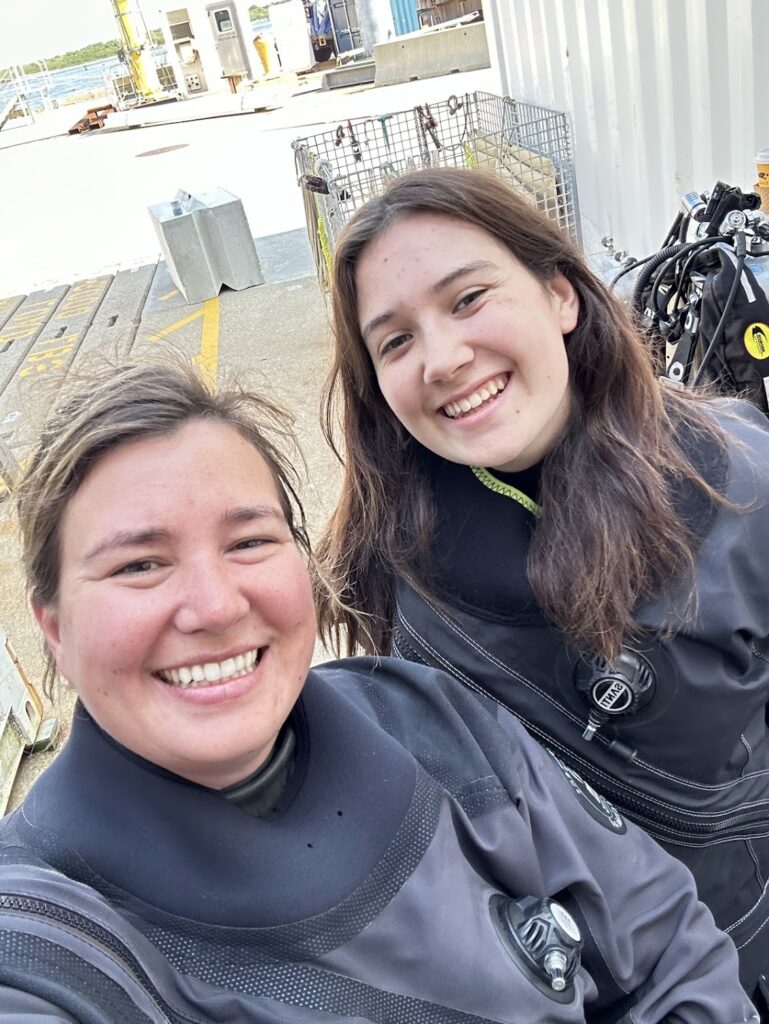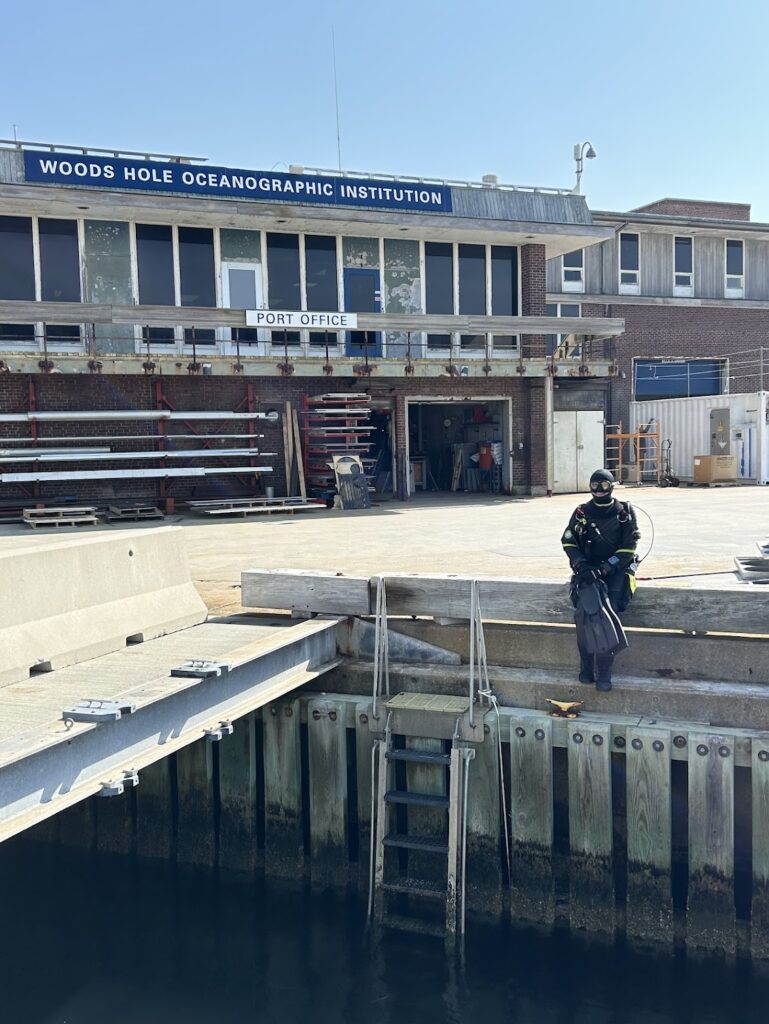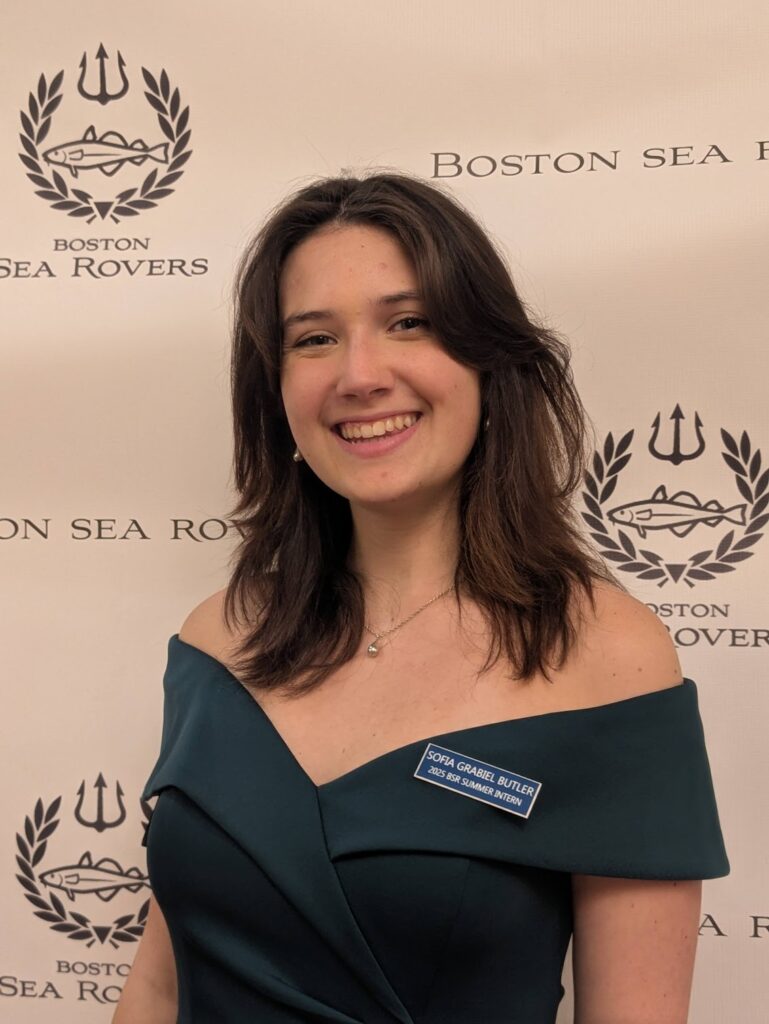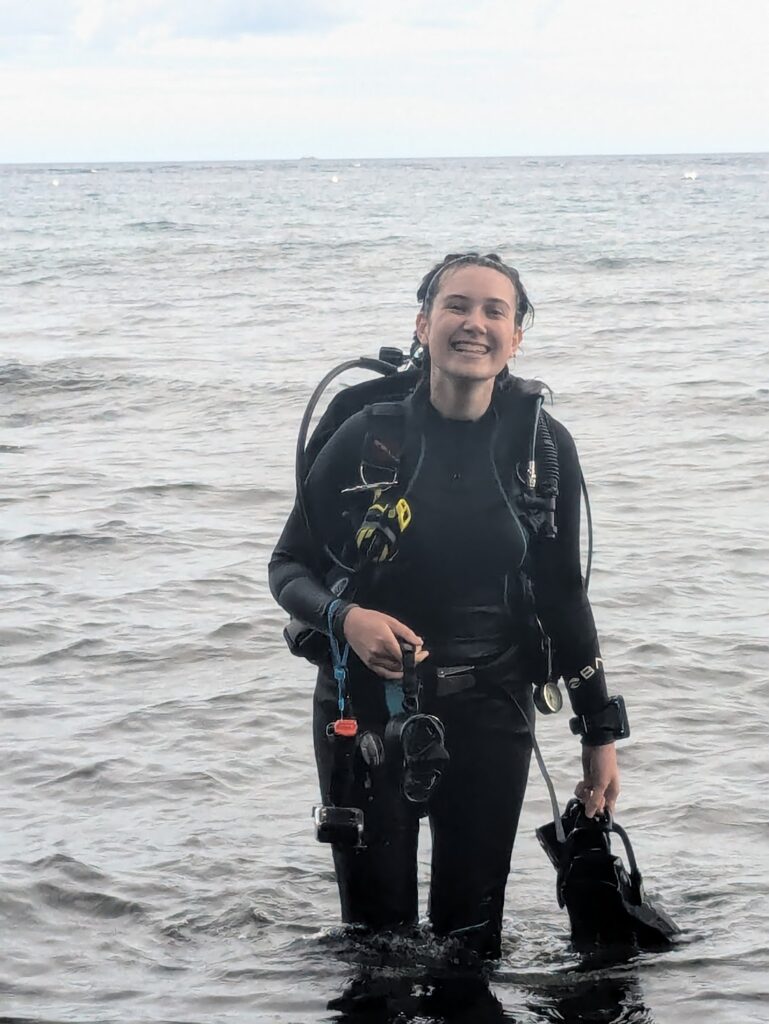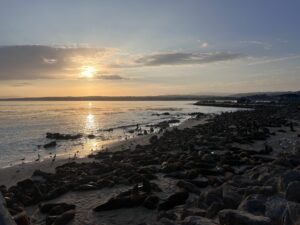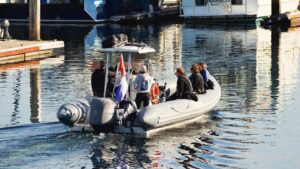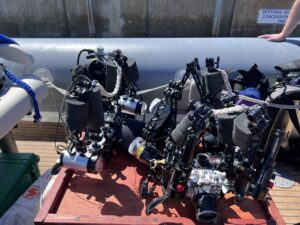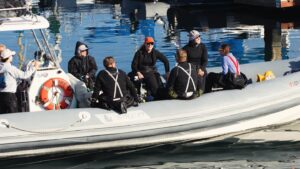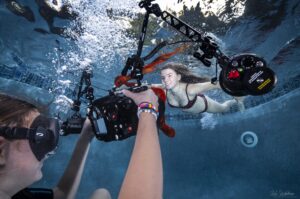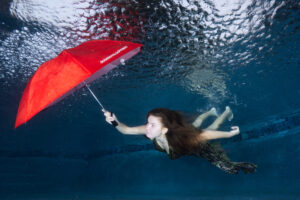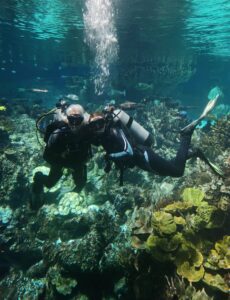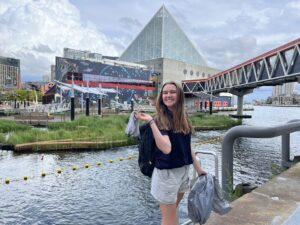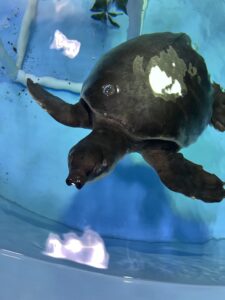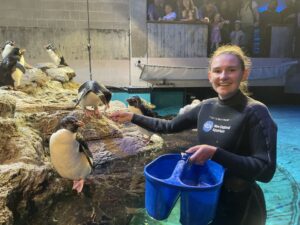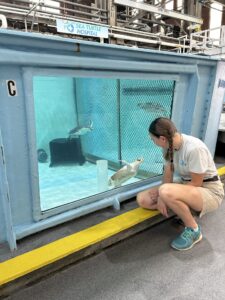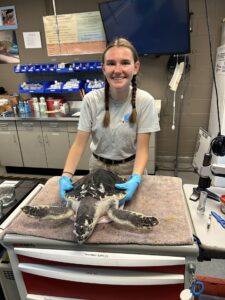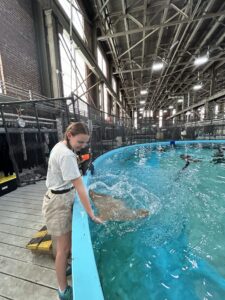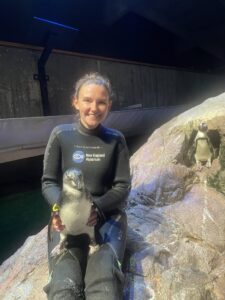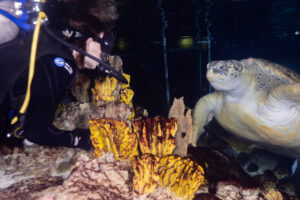After my time in Beverly, I spent the second half of the week back in Woods Hole to join the NAUI Rescue course Sea Rover President Kim Malkoski was teaching at WHOI. Kim and her coworker Giorgio led lectures on the first day, and then on the second Kim and us four students dove off the dock at WHOI for the practical section. We practiced different surface towing techniques, and made sure we knew how to properly ascend while carrying another person. At the end of the dive, we stayed in the Well, a hole in the dock where divers can enter and exit from, and all took turns thrashing around and generally trying to be as uncooperative as possible to give our ‘rescuers’ as much of a challenge as possible. I had a lot of fun with that part! I’m really glad I got to join the class, and I learned a ton, so am excited to have the chance later this summer to complete my training and be Rescue certified, since I wasn’t able to join the final examination day.
Kim also walked me through a lot of dive planning techniques I hadn’t been exposed to before! We calculated my SAC (Surface Air Consumption) Rate, which describes how much air a diver breathes in a minute at the surface, which helps them calculate how long their air supply will last at depth. We also walked through several techniques of planning a dive based on different limiting factors (bottom time, air consumption, etc.) and dive profiles. I’m really glad I had the chance to learn all of this from Kim, I can already tell it’s going to come in handy in the future.
On my last evening with Kim, we stopped by her WHOI friend Emily’s house, where Emily was having a barbeque! I met a bunch more of Kim’s friends and coworkers from WHOI, tried a quahog stuffie for the first time, and bulldozed through some exquisite corn dip. I also graciously and heroically defended Kim from dying of asphyxiation by eating her portion of the mango salad (to which she is allergic).
It was so lovely to return to the Malkoski home, and I both learned a ton and had a great time. Thank you again to Kim, Vin, and the whole Malkoski crew for being so welcoming to me! I can’t wait to visit again.
– Sofia
